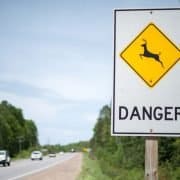Safety: Driving tips for late fall and early winter
The late fall or early winter season brings an increase in seasonal dangers that you should be aware of. Road and driving conditions change with the onset of time changes and late fall and early winter weather changes.
Driving tips for the late fall and early winter season:
- Frost on windows. Make sure you have a scrapper in your vehicle and clean off your windshield before your start driving. Warm your vehicle up and ensure you have good visibility before you drive.
- Reduced visibility with less daylight. With less daylight it makes it difficult to see for children, pedestrians and cyclists. So always be alert and pay attention to the situation outside your vehicle.
- Low beams for fog. Low beams give you better visibility when driving in fog. When driving through fog, slow down and stay well behind the car in front of you so you’ll have adequate time to stop if you need to.
- Winter blades. Check the condition of your wiper blades to make sure they are in good condition for the changing weather conditions. Switch to winter wiper blades which are designed for cold and winter conditions.
- Windshield fluid level. Keep your windshield fluid topped up when driving in these type of fall and early winter conditions. Having a clean windshield for the driver is the utmost importance.
- Keep your distance. Leave a little more space between you and the vehicle in front on rainy or foggy days, during dawn or dusk, and in areas with wet leaves. This will give you more time to react.
- Check your tire pressure. Seasonal weather can rapidly change from warm to cold, your tires will often expand and contract. This can lead to low tire pressure, please check your tire pressure









